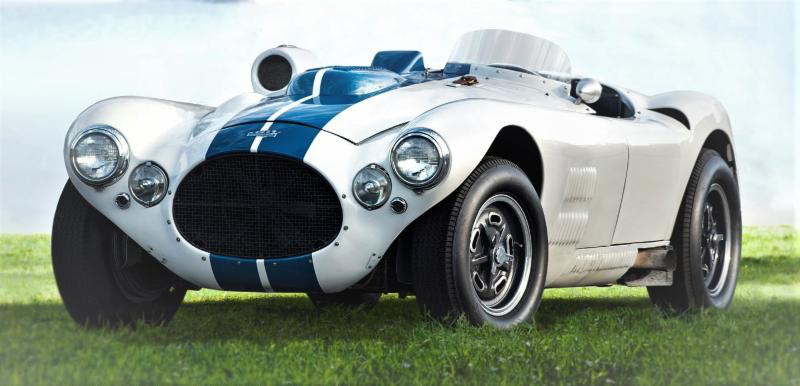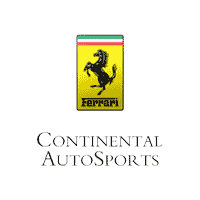Once Upon A Wire Wheel
The following is the sixth in a series of articles recalling highlights from the Region’s beginnings through the first 50 years. This was written by Bernie & Norm Koglin with input from Fred Wacker, Bud Seaverns, and Burdie Martin to name a few. Look for more articles though out the year. Have fun exploring the past and how it relates to now.

The June Sprints® Reign *1977 – 1981
With the demise of the Can-Am at the end of the 1974 season, SCCA scrambled to come up with a replacement for that most successful series. For several years the Formula 5000 races had been gaining a following, and a number of “name” drivers had competed. Mario Andretti, Al Unser (Sr.), Brian Redman, Vern Schuppan and Jackie Oliver were among those that had been F5000 race winners. So SCCA determined that the “new” Can-Am cars would be single seat F5000 cars with full wheel-covered bodywork. An under 2 liter class was included to increase the number of race entries. The races were often close and no team or manufacturer really dominated, but fields tended to be sparse. Simply said, the “New” Can-Am never generated in sponsors, spectators or promoters the interest in, or excitement of, the original series. As this five year period began, there were forces actively campaigning for auto racing noise regulation. Chicago Region, led by our own Dr. Tom Cronin, was in the forefront of the opposition, which led to the defeat of such legislation. It should be noted that the limits of sound emission recommended by some anti-racing people (how about 85 decibels at fifty feet?) could have ended motor racing as we know it.
Activities in 1977 opened with a winter carnival. 14 cars participated in a rally to the carnival site and 71 cars competed in four ice gymkhana classes. Bonnie Gladish, our present Region office manager, barely bested Linda Breitenbach to take 2nd place in the bubblegum bubble-blowing contest. Gwen Bruno won, and carrying the banner for all men, Rick Ruth came in 4th.
Claire Ball and Ed Pomeroy were co-chairmen for another of the Region’s terrific Chicago Auto Show display.
The Region conducted two rallies as part of the Tri-State Sports Car Conference championship. Of the 25 cars that competed in the March event only 6 were Chicago Region. TSD Rallying was not gaining ground.
In the May issue of Piston Patter an article described, and displayed model photos of a new Can-Am car under construction by McKee Engineering, directed by Chicago Region Member Bob McKee. Sponsored by Doug Schultz, the car was to be called a Schkee . Tom Klausler was test driver. It was a really slick aerodynamic coupe, and Doug, Bob and Tom all contributed to the design and development. With Tom driving, the car won its first race, the St. Jovite Can-Am. How about that!
Terry Jesk, who had been racing since the early 60’s, won the EP race at the June Sprints. He’s still at it today in his SRF, and will probably continue until his grandchildren are to old to help him into the cockpit.
The sadly derelict state of Meadowdale International Raceway, after eight years of non-use, was the subject of a photo essay in July Piston Patter.
A Lola driven by Britisher Peter Gethin, won the revived Can-Am at RA, but Tom Klausler in a Doug Schultz Schkee had led for much of the race, until being punted off the course by a slower car.
The Michigan Miglia Rally circled Lake Michigan in two days (and nights) of brisk driving. A traditional Chicago Region event in the past, it had been on the calendar every few years. In the days of little radar and more liberal speed limits it was one heck of an exciting and popular activity. In 1977 it was put on for the first time in 14 years. 33 cars participated in the rally, which included regularity runs on the Road America course.
Piston Patter, with John Napier Hill the editor, was awarded the 1977 Regional Publication Award at the SCCA National Convention.
During 1978, Piston Patter regularly ran informative articles about specific race specialties. Not a bad way to help race staff recruiting today.
An ice race in January, 1978 included a modified LeMans start, in which a runner for each car was to run across the course and tag the car before it could start. It seems that Sandy Darroch slipped and fell as she ran, and stood up to face eight cars bearing down on her. The typically skilled Chicago Region drivers got past her Ok … all but her driver, who was still waiting for the tap.
What a June Sprints! 550 entries and nearly 60,000 paying spectators. Drivers appeared from California, Florida and just about every place in between. Probably the largest field of cars entered in any race in history, until then.
With the painful memories of the fuel crisis earlier in the 70’s in mind, SCCA and the U.S. Department of Energy had arranged to sanction a series of economy runs. Competitors attempted to beat the DOE MPG rating for their specific cars. Winners had the highest percentage improvement. Class winners included: John and Trudy Sutton, + 135.6%; Glenn and Barb Grossklags , + 132.5%; Rick Angelica and Sherri Smith, + 133.0%. A VW diesel managed 69 MPG, and the overall winner, in a Dodge Aspen, achieved 30 MPG which was 167% better than the DOE rating for that car.
A Schkee, with Tom Spalding behind the wheel, finished a creditable 10th in the 1978 Can-Am. Alan Jones won, seven seconds ahead of George Follmer.
While it was not the sophisticated series of today, Trans Am racing was competitive and the cars put on a good show. Greg Pickett won followed by Tuck Thomas. Trans Am was the feature event, but as usual a bunch of races filled-out the program. A race for CSR and S2000 cars ended with Chuck Witz in his Bobsy CSR 1st overall, and John Cahill 2nd overall and 1st in S2000. The drive of the day had Bill O’Connor starting at the back of the grid, due to a last minute repair, and finishing less than a car length behind John for 2nd in S2000.
John Napier Hill and Foster Sturdevant were co-Chairmen of the 1979 SCCA National Convention, hosted by the Chicago Region. As might be expected it was a smashing success. More recent members may not know that in this era the SCCA national office provided only basic program guidelines for conventions. The host region was responsible for all planning, organization and activities. A heck of a lot of work for a dedicated bunch of Chicago members. Our own Dave Morrell won the 1979 Woolf Barnato trophy, the highest SCCA award, and during the convention his fellow SCCA directors elected him Chairman of the Board as well. Well-deserved honors.
Another great Sprints weekend – huge entry and large crowd.
Of the 5 top finishers in the 1979 Trans Am 4 were Porsches. Peter Gregg’s was first and Ludwig Heimrath in another turbo-panzer followed. SCCA was fiddling with the series trying to find a successful formula. This year there were 2 categories one (sort of) stock and one (somewhat) exotic . Rick Dittman was 8th in the “sort of” category.
The ’79 Can-Am took place on Sunday of the same weekend. Jackie Ickx in the Carl Haas/Jim Hall Lola won. Bobby Rahal had another bad luck RA weekend. He retired while running third. Ickx would go on to win the CanAm championship, the third in succession for the Haas/Hall team.
We had a fun winter weekend in 1980, which included Saturday and Sunday Rallies, Ice Gymkhanas and Ice Races. Try it, you might like it.
1980 was also the year of our first experience with AMA motorcycle racing. All the fears that gangs of black leather clad thugs would rampage through central Wisconsin proved groundless. An orderly crowd saw some great racing.
Tom Cronin, GT4; Dave Frellsen, GT2; Bruce Nesbit, GT3; Peter Heckman, FC; Bill O’Connor, S2000; all Chicago Region/all June Sprints winners in ’80.
Monte Shelton’s Porsche outlasted a gaggle of fast Corvettes to win the Trans Am and Al Holbert finished first in the Can-Am.
Did you know that Jim Swintal the CART IndyCar starter is also a prominent auto racing artist? During the years when Jim was an active Chicago Region member he furnished the artwork for a number of outstanding Piston Patter covers and articles.
John Paul and J.P. Jr. won the IMSA pro weekend feature. Uncle Sam had not locked in on their source of funds yet.
From November 1980 through January 1981, five members of the Chicago Region died. They had all contributed mightily to the success of the Chicago Region and SCCA. Dave Davies, active rallyist and Region official; Bob Lyon, Board member and race car driver; Dave Morrell, starter, steward, race car driver, Chicago Region R.E., National director, National Chairman of SCCA, winner of the highest award bestowed by SCCA, and among the outstanding Region members of all time; Corky Vance, who began streamlining our race registration procedures, leading up to a system that is today a model for all of SCCA; and finally Clif Tufte, the man with the vision and drive to build the finest race course in the U.S. near a small Wisconsin town. We all owe a great debt to the memory of this gracious man, who thought of and dealt with the Region as a true partner.
TSD rallying might not have been very popular, but in 1981 the more casual, fun events still could draw entrants. Witness the 35 cars entered in the March event, Al Lien and Linda Brodin were rallymasters.
The June Sprints were still pulling in large crowds of paying spectators and the largest entries in the history of National races.
Danny Sullivan could have won the ’81 Can-Am but his crew did not bring him in for a quick fuel stop, and while in the lead he ran out at corner 10, giving the win to Geoff Brabham.
And (yawn) a 930 Porsche won the Trans Am again. Monte Shelton driving.
The Region’s Solo group hosted the 1981 CenDiv Solo II Championships at Great America. Claire Ball, Dick Bianchi and Dan Tondu were co-Chairmen of the event, which drew 281 entries. Claire also won the B Prepared class.
Second place in the 1981 IMSA main event gave Brian Redman the championship. Stommelen and Grohs, a couple of Germans driving a Porsche were first. This sort of presaged the Porsche IMSA dominance.
As 1981 came to a close, an event was shaping up that would lead to changes in the emphasis, character and appearance of Road America that few, if any, anticipated or predicted:
C.A.R.T. WAS COMING!
Editor’s Note: These articles end in 1989. If any one out there would like to put pen to paper with interesting facts from the years 1990-1999 & 2000-2018 we would very much appreciate them. Send your memories, facts or ramblings to: PegBall@Comcast.Net. Thanks!


